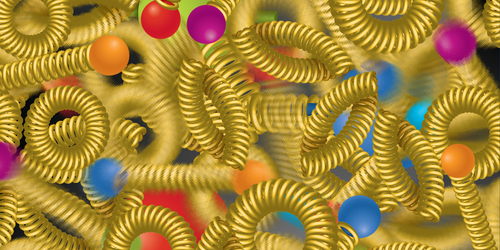A Different Angle on the Color Glass Condensate
The gluon is the “glue” of subatomic particles, mediating the strong force that binds quarks to make subatomic particles such as protons and neutrons. Researchers can image the gluons within a proton by colliding protons with high-energy electrons. Most often, the resulting image reveals sparsely distributed gluons. But under specific conditions, such collisions are predicted to provide a glimpse of a very high-density state of gluons called the color glass condensate. Now Xiaohui Liu of Beijing Normal University and colleagues propose a way to observe the color glass condensate using the future electron–ion collider (EIC), which is set to be built at Brookhaven National Laboratory, New York [1].
The EIC will collide electrons with heavy ions, such as gold. Liu and colleagues propose looking for signatures of the color glass condensate in the debris of these collisions. Their method involves measuring the energy of the debris as a function of its angle relative to the collision axis. Models indicate that a measure of correlation between the debris energy and angle depends on whether the gluons in the ion that participated in the collision were in a dilute state or the color glass state. So, by measuring this correlation, Liu and colleagues predict that researchers can pinpoint the “saturation scale,” which marks the onset of the color glass condensate regime within an ion. Such a measurement could shed light on the unique ability of gluons to interact among themselves.
–Nikhil Karthik
Nikhil Karthik is an Associate Editor for Physical Review Letters.
References
- H.-Y. Liu et al., “Nucleon energy correlators for the color glass condensate,” Phys. Rev. Lett. 130, 181901 (2023).




